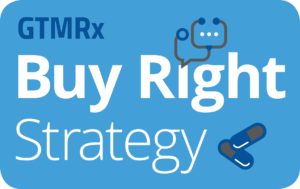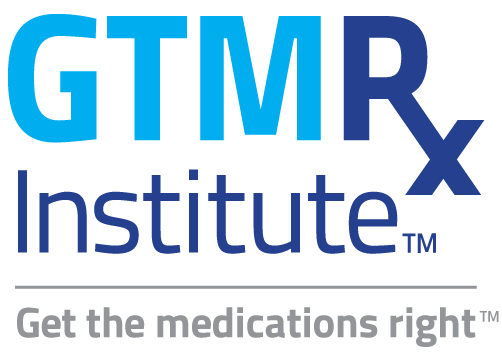 Jane Cheshire Gilbert, CPA
Jane Cheshire Gilbert, CPA
Director of Retiree Health Care
Teachers’ Retirement System of the State of Kentucky
March 7, 2021
Evidence-based, road tested: PGx as part of CMM
Did you know a simple test can reveal how someone will respond to their medications? This crucial bit of information can save millions of dollars across a patient population.
Here’s why: Roughly 90% of the population has at least one genetic variant that could affect their response to a particular medication. Such variants could increase the likelihood of side effects and or treatment failure.1,2
Nearly $530 billion is wasted each year on non-optimized medication therapy. What’s more, over 275,000 avoidable deaths each year are tied to non-optimized medication use.3 The Teachers’ Retirement System of the State of Kentucky (TRS) is working with the GTMRx Institute to reduce those statistics.
Why, for instance, keep a patient on a blood thinner that is not working, especially when the results could be fatal? At TRS, we have demonstrated that PGx can target correct therapies more precisely.
Kentucky retired teachers provide a case example
TRS is a defined benefit plan that serves roughly 140,000 active and retired teachers. Of the over 37,000 Medicare-eligible retirees, more than 7,000 are over 80. The plan is a fully insured Medicare Advantage plan and a self-funded Medicare Part D drug plan.
Here’s how TRS’s PGx program works:
A contracted PGx vendor is responsible for the genetic testing. Also, the Know Your Rx Coalition, with which TRS already had a relationship, supplies the clinical pharmacists who provide more comprehensive medication therapy and coordinate with prescribing physicians.
Participants receive a saliva collection kit that can be returned by mail for DNA analysis. The PGx vendor develops a personalized medicine report that includes the relevant genetic data as well as known drug-drug interactions, lifestyle factors and other relevant information. With the patient’s permission, the coalition pharmacists reach out to the prescribing physician to discuss the DNA results. If the physician approves (most do), any appropriate changes are made to the retirees’ medication plan.
Importantly, the Know Your Rx clinical pharmacists spend time on the phone discussing the results with the retirees, explaining the rationale behind any medication changes and making sure they understand everything involved.
Tangible results
TRS first focused on those at greatest risk, but due to the age of our population and the high percentage presence of polypharmacy, TRS quickly invited all Medicare-eligible retirees to participate. Of the over 7,000 retirees taking part, 28% received a medication change recommendation due to DNA implications alone, and the prescribing physician accepted the recommendation 87% of the time.
The outcomes have proven the concept. Costs grew 12% faster for those not enrolled in the PGx program, according to TRS’s PGx vendor, than enrollees based on charged amounts for both medical and drug claims at an 18-month evaluation. TRS continues to educate Medicare Advantage carriers and pharmacy benefit managers of the need for PGx inside these federal programs. Including PGx in Medicare Advantage and Medicare Part D would help continue to control the TRS Medicare Eligible Health Plan premium. The 2021 monthly premium is $178, down from $232, 20 years ago due to increased federal revenues and heightened care management inside these federal programs. PGx, if included in these federal programs, would bring greater cost efficiency.
Keep in mind that the positive impact is not a one-time gain. Our DNA doesn’t change over time. This means the ROI lasts for the rest of a patient’s life. It’s significant; in 18 months, according to one of TRS’s vendors, $12 was saved on charged claims for every $1 spent on PGx program costs. Plus, 70% of participants said the program was extremely valuable.
A means to an end: science + a service delivery model
The science behind PGx is exciting — even if it’s decades old. But it’s the way the science is applied, and by whom, that makes the greatest difference.
PGx is simply a tool, one that clinical pharmacists at the coalition use in the context of a consultation with TRS retirees and their prescribing physicians. Clinical pharmacists work collaboratively with physicians and patients to ensure medications are helping to achieve the clinical goals of therapy. This approach allows for a precisely fitted and delivered medication plan based on the unique characteristics of an individual patient’s genetic profile as well as their lifestyle and environment. It considers all the medications taken, from prescriptions to herbal supplements, and adjusts if clinical goals are not being met.
TRS’s experience shows this can be done at scale. The TRS model can be replicated nationally, and TRS has seen tremendous interest in doing just that.
Enthusiastic patients and physicians
When TRS started this program, we underestimated how quickly the retirees and their prescribing physicians would embrace the program — the testing, the clinical pharmacist counseling and accepting of the results by physicians.
But PGx does face resistance — in no small part from the predisposition to keep doing things the same way as always. TRS has seen how PGx enhances the comprehensive medication management process. Making that the standard of care nationally would allow reimbursement rules, especially inside of Medicare Advantage and Medicare Part D, to catch up with science that is well over a decade old.
A couple of positive signs toward that recently have been seen. On the regulatory side, Medicare made a recent local coverage determination to allow PGx when specific criteria are met. Secondly, on the insurer side, some large companies, including UnitedHealthcare, have incorporated the use of PGx, for example, to include reimbursement for certain patients with depression. But more can be done to get the medications right for all members and to address the 275,000 avoidable deaths due to medication occurring each year.
It’s tragic that people spend months or years on a drug that’s doing them no good whatsoever — and that might be killing them.
Getting started
To implement PGx, engage your medical plan carrier and your PBM in this conversation. Even if they are not convinced today, a growing chorus of voices is recognizing the value of PGx as part of medication optimization to save lives, improve health outcomes and reduce costs. Use of evidence-based genetic tools and clinical medication management will do away with trial-and-error prescribing ultimately. And TRS’s experience provides a path toward getting there as a widespread, accepted standard of care.
1 Ji, Yuan, et al. “Preemptive pharmacogenomic testing for precision medicine: a comprehensive analysis of five actionable pharmacogenomic genes using next-generation DNA sequencing and a customized CYP2D6 genotyping cascade.” The Journal of Molecular Diagnostics. 2016;18(3):438-445
2 Van Driest, Sara L., et al. Clinically actionable genotypes among 10,000 patients with preemptive pharmacogenomic testing. Clinical Pharmacology & Therapeutics. 2014; 95(4):423-431.
3 Watanabe J, et al. “Cost of Prescription Drug–Related Morbidity and Mortality.” Annals of Pharmacotherapy, March 26, 2018. journals.sagepub.com/eprint/ic2iH2maTdI5zfN5iUay/full


